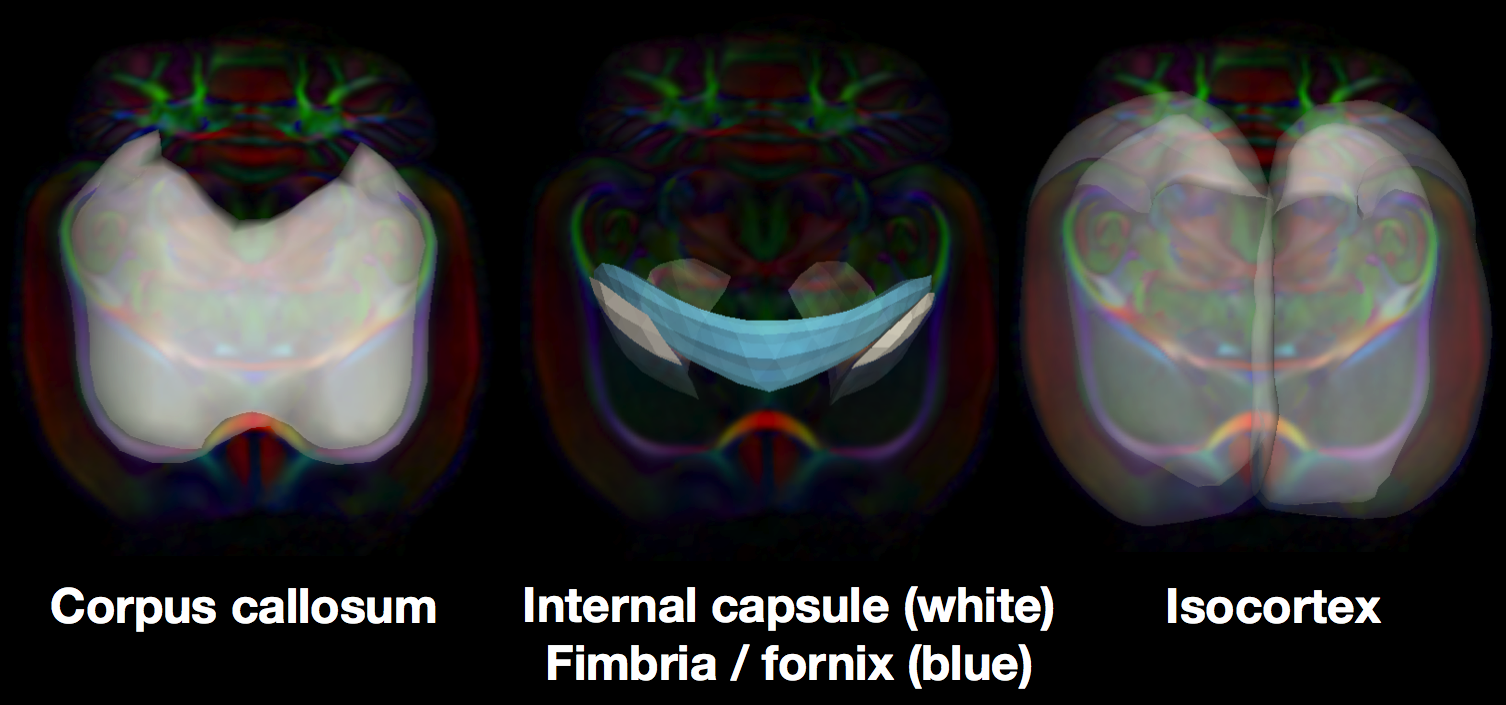Tract specific Analysis (TSA) uses continuous medial modeling for structure- specific analysis of diffusion in sheet-like white matter tracts in the human brain. The medial geometry provides both a skeleton surface (the medial surface) and two “spoke” vectors from the skeleton to the boundary of the structure. Diffusion properties such as fractional anisotropy (FA) are sampled along the spokes and their mean is projected onto the skeleton for statistical testing on the medial surface. TSA enhances sensitivity and reduces multiple comparisons.
In a new abstract to appear at the Joint Annual Meeting ISMRM-ESMRMB 2014, we construct medial models of white matter tracts in the rat brain. We further apply the medial modeling approach to include the isocortex. Compared to human cortex, the lissencephalic rat cortex is readily modeled with a medial surface and we can resolve higher FA with DTI. We apply the new medial models to the study of the neurobiology of chronic stress in rats. Tracts connecting to the hippocampus and prefrontal cortex are of particular interest, since these areas are widely reported to be affected by stress and are important in mediating stress response. We therefore built medial models of corpus callosum, fimbria / fornix, and the internal capsule.

Medial skeletons of structure-specific analysis models in the white brain, overlaid on the RGB-FA image of a rat template.
The results will be presented as an e-poster in Milan.